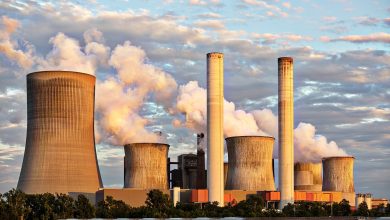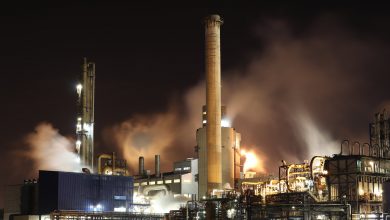Startup Companies Are Aiming to Eliminate Fossil Fuels from the Airline Industry

The Expansion of Air Travel
As the global middle class continues to expand, economists and travel experts predict that the airline industry will also continue to grow. Over the next two decades, the number of global annual airline passengers is expected to double (Nowakowski, 2017). However, as air travel becomes more prevalent, especially in developing countries like China, India, and Brazil, carbon emissions from the aviation industry will also rise. According to the National Geographic Society, carbon emissions from airlines will grow by 300 percent by the year 2050. Even though today’s planes produce just about half of the emissions of the average airline fleet in 1990, the rapid increase in the number of planes in the sky has led to an overall increase in emissions from the aviation sector. While fossil fuels have always been critical for aviation, some airline startups and even existing aviation giants are starting to invest in alternative fuels, new technology, and major efficiency enhancements to reduce the airline industry’s dependency on fossil fuels.
The global transportation system is dominated by fossil fuels. Without gasoline, diesel, and jet fuel, transportation systems around the world would come to a halt. Scientists say having a transportation system that is dependent on fossil fuels contributes to increasing levels of air pollution and climate change. In addition to being the single biggest source of greenhouse gas emissions in the United States, 14 percent of all global carbon emissions can be linked to transportation systems (Suzuki, 2018). According to data released by the U.S. Environmental Protection Agency, oil fuels about 93 percent of transportation energy usage in the country (EPA, 2011). Given that the Trump administration recently gutted American fuel efficiency standards, some environmentalists are concerned that emissions from the transportation sector will end up rising more rapidly than previously thought.

Airlines and Carbon Emissions
How much do airlines contribute to global carbon emissions? The International Council on Clean Transportation says that carbon emissions from commercial airline travel contributed to roughly 918 million metric tons of CO2 in 2018, which is equivalent to about 2.4 percent of global carbon emissions (Graver et al, 2019). In order to better understand the emissions from the commercial aviation sector, a study published by the International Council on Clean Transportation developed a global aviation CO2 inventory, which is a much more comprehensive approach than has previously been conducted by other researchers. However, from a regional or national standpoint, the International Council on Clean Transportation researchers found that it has often been very challenging for policy makers to identify specific emissions from individual regions or nations. The proportion of emissions between domestic and international air travel has also been challenging to distinguish. Although, with this comprehensive study, the researchers have developed some key insights on global aviation emissions.
Discussions related to evaluating aviation emissions have been going on for decades. While it has been challenging to pinpoint specifically where aviation emissions are the most prevalent, the researchers with the International Council on Clean Transportation have estimated that as much as 25 percent of all global aviation emissions have origins in the Asia-Pacific region, where air travel has been exploding in recent years (Graver et al, 2019). Australia, China, India, and Japan were found to be the countries emitting the most emissions from their aviation sectors in the Asia-Pacific region. However, when it comes to the top emitter of aviation emissions, the United States and its associated territories have been found to be the world’s largest emitter of greenhouse gases, making up about 24 percent of global aviation emissions (Graver et al, 2019). Through an analysis of more than 40 million flights, the researchers from the International Council on Clean Transportation found that the airline industry may be emitting about 1.5 times as much CO2 than was previously estimated by a study from the United Nations (Tabuchi, 2019).

Investments in Fuel Efficiency
In recent years, the airline industry has been moving forward with investments in fuel-efficient aircraft and other technologies to make planes lighter and more efficient to fly. In addition to cutting greenhouse gas emissions with more efficient plans, airline companies have been motivated by a desire to cut fuel costs, which is the airline industry’s top expense. Brandon Graver, who is the lead researcher from the International Council on Clean Transportation, says that “Airlines, for all intents and purposes, are becoming more fuel efficient. But we’re seeing demand outstrip any of that” (Tabuchi, 2019). Even with investments in lighter aircraft and advances in biofuel technology, the sheer demand for airline travel continues to increase emissions. In an effort to solve this problem, some scientists have been exploring new technologies to completely eliminate fossil fuels from the airline industry.
The electrification of the transportation industry has started to make big oil companies worry about a reduction in global fuel demand. The electric vehicle movement has been rapidly expanding in the world’s developed countries. However, when it comes to electric airplanes, the movement towards full electrification has been sluggish. Building and designing an electric airplane is much more challenging than building an electric vehicle. While a number of aspiring startup companies have been attempting to design an electric airplane, the challenges are immense. The current situation with battery technology has not been able to meet the need of energy-guzzling airplanes. The most advanced batteries available today are only able to store 40 times less energy per weight ratio than today’s jet fuel (Viswanathan et al, 2018). In fact, jet fuel is able to produce about 14 times as much usable energy as today’s best lithium-ion batteries (Adams, 2017). In order to provide enough energy via batteries to power an airplane, the weight of the batteries alone would not allow a large passenger jet to be able to fly.

Sustainable Aviation Fuels
Another strategy to reduce emissions from the airline industry has been investments in sustainable aviation fuel, which is essentially a sophisticated term for aviation biofuel. While the development of eco-friendly biofuels has taken off in recent years for commercial vehicles, there are currently only five airports in the world that are able to supply airlines with ample levels of sustainable aviation fuel. These airports are located in: Brisbane, Australia; Los Angeles, California; Bergen, Norway; Oslo, Norway; and Stockholm, Sweden. Even though scientists say that sustainable aviation fuels can cut greenhouse gas emissions by as much as 80 percent, this sophisticated fuel can cost nearly four times as much as traditional jet fuel produced from fossil fuels (Bernabe, 2020). However, even with the cost difference, Scandinavian Airlines has publicly revealed a goal of powering all of its domestic flights with sustainable aviation fuels by 2030.
The Development of Plasma Thrusters
In addition to efforts to electrify aircraft or move towards the adoption of sustainable aviation fuels, some researchers have been evaluating new technology that will allow a jet engine to produce power without any fossil fuels. According to research conducted by a team of Chinese scientists, plasma thrusters that are typically used on operational spacecraft could be compatible with today’s airplanes. Scientists with the Institute of Technical Sciences at Wuhan University say that they were able to design a plasma thruster that can effectively compete with traditional airplane engines. While this technology has previously been tested and evaluated for commercial aviation purposes, challenges related to air friction and other atmospheric issues had previously led these experiments to fail. Although, the Chinese scientists say that their research has allowed them to overcome these challenges to develop a viable alternative for today’s airlines.
Using the same level propulsion and power consumption, the researchers from the Institute of Technical Sciences at Wuhan University say that their technology can power a plane without the use of fossil fuels. The technology works by using a jet thruster that is powered by microwaved air plasma. Through the use of a microwave oscillator known as a gravitron, this technology is able to send microwaves through a tube that lead to an igniter to heat high-pressure plasma and create propulsion. While this test was conducted through the use of a relatively small laboratory model, the researchers say that it can be scaled up to the equivalent size of a modern jet engine (Delbert, 2020). While this technology may sound too good to be true, there is one catch – the temperature of the plasma.

Excess Heat
As a result of the pressured air and the high-intensity microwaves, the plasma thruster creates super-heated plasma. Despite the fact that this may be able to create a tremendous amount of thrust needed to propel a commercial aircraft, the plasma is heated to an extremely high temperature that melts a number of high-strength materials that are typically used in an aircraft engine. Prior to scaling up the size of this research model, scientists need to conduct tests on new materials that can withstand that enormous amount of heat that is created by the plasma thruster. Through the use of a combination of quartz and steel, the researchers are testing new materials to house the plasma thruster. Overall, the head researcher has said that, “The motivation of our work is to help solve the global warming problems owing to humans’ use of fossil fuel combustion engines to power machinery, such as cars and airplanes” (Robitzski, 2020).
Future Policy Initiatives
The rapid growth in aviation-related emissions has become a major concern for many environmentalists and global policy makers. William Raillant-Clark, who is the chief communications lead for the United Nations aviation body, has said that the United Nations recognizes the importance of addressing aviation emissions. Additionally, he says that the United Nations is committed to providing more urgent support to initiatives that specifically address the need to clean up the aviation industry. In recent years, a booming global tourism industry and the growth of a number of low-cost airlines has propelled aviation emissions much higher. Theses emissions are growing fastest in Southeast Asia. Research conducted by Airports Council International has revealed that 12 of the top 30 fastest-growing airports in the world are located in India and China (Tabuchi, 2019).
In response to growing concerns about greenhouse gas emissions from the aviation sector, governments around the world have pledged to support efforts to improve the fuel efficiency of the world’s airlines. In coordination with the United Nations and the International Civil Aviation Organization, 190 countries have adopted a plan to reduce the impact that airline travel has on climate change. While the exact details of this plan are still being worked out, some policy makers expect new international regulations to be developed that require airlines to take significant steps to improve fuel efficiency in the coming years.
Sources
Adams, E. (2017). “The Age of Electric Aviation Is Just 30 Years Away.” Wired.
Bernabe, D. (2020). “The future of sustainable air travel: How airlines (and you) can fly more efficiently.” Fortune.
Delbert, C. (2020). “Wait, Could Plasma Thrusters Really Replace Jet Engines?” Popular Mechanics.
EPA. (2011). “Inventory of U.S. Greenhouse Gas Emissions and Sinks.” U.S. Environmental Protection Agency.
Graver, B., et al. (2019). “CO2 emissions from commercial aviation, 2018.” The International Council on Clean Transportation.
Nowakowski, K. (2017). “5 Advances That Will Change Air Travel.” National Geographic.
Robitzski, D. (2020). “Scientists Create a Prototype ‘Air Plasma’ Engine That Works Without Fossil Fuels.’ Science Alert.
Schaberg, C. (2018). “The Jet Engine Is a Futuristic Technology Stuck in the Past.” The Atlantic.
Suzuki, D. (2018). “SUVs and Trucks Nullify Car Efficiency Gains.” EcoWatch.
Tabuchi, H. (2019). “Worse Than Anyone Expected: Air Travel Emissions Vastly Outpace Predictions.” The New York Times.
Viswanathan, V., et al. (2018). “Why Aren’t There Electric Airplanes Yet? It Comes Down to Batteries.” Smithsonian Institute.
Ye, D., et al. (2020). “Jet propulsion by microwave air plasma in the atmosphere.” American Institute of Physics Advances.



